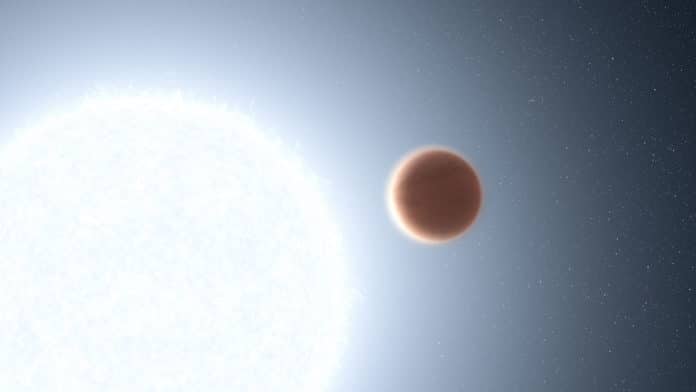The exact temperature at which these aerosols begin to form in exoplanets has not yet been observed. According to theoretical models and observations, silicate clouds play an essential role in exoplanets between 950 and 2,100 K. But, some giant planets are extremely hot to avoid condensation altogether.
In two new studies, Hubble astronomers reported weather conditions on ultra-hot Jupiters. One world is experiencing the rain of vaporized rock, whereas the other has its upper atmosphere getting hotter because of intense ultraviolet (UV) radiation from its star.
David Sing of the Johns Hopkins University in Baltimore, Maryland, a co-author of two reported studies, said, “We still don’t have a good understanding of weather in different planetary environments. All our weather predictions are still finely tuned to what we can measure when you look at Earth. But when you go to a distant exoplanet, you have limited predictive powers because you haven’t built a general theory about how everything in an atmosphere goes together and responds to extreme conditions. Even though you know the basic chemistry and physics, you don’t know how it will manifest in complex ways.”
The first study describes the Hubble observations of WASP-178b. The planet is located about 1,300 light-years away. It has a cloudless atmosphere on the daytime side. Plus, the atmosphere is enriched in silicon monoxide gas.
One side of the planet permanently faces its star. Therefore the torrid atmosphere whips around to the nighttime side at super-hurricane speeds exceeding 2,000 miles per hour. The planet’s nighttime side is enriched with silicon monoxide, but this silicon monoxide may cool enough to condense into the rock that rains out of clouds. Still, the planet is hot enough to vaporize rock.
The second study describes the observations on a super-hot Jupiter, KELT-20b. The planet is located about 400 light-years away and has a blast of ultraviolet light from its parent star. This constant radiation heats metals in the atmosphere and generates a thermal layer in the atmosphere, much like Earth’s stratosphere.
Guangwei Fu of the University of Maryland, College Park, said, “Until now, we never knew how the host star directly affected a planet’s atmosphere. There have been many theories, but now we have the first observational data.”
“Evidence came from Hubble’s detection of water in near-infrared observations and NASA’s Spitzer Space Telescope’s carbon monoxide detection. They radiate through the hot, transparent upper atmosphere produced by the inversion layer. This signature is unique from what astronomers see in the atmospheres of hot Jupiters orbiting cooler stars, like our Sun. The emission spectrum for KELT-20b is quite different from other hot Jupiters. This is compelling evidence that planets don’t live in isolation but are affected by their host star.”
Josh Lothringer of the Utah Valley University in Orem, Utah, said, “Though super-hot Jupiters are uninhabitable, this kind of research helps pave the way to better understanding the atmospheres of potentially inhabitable terrestrial planets. Suppose we can’t figure out what’s happening on super-hot Jupiters with reliable solid observational data. In that case, we’re not going to have a chance to figure out what’s happening in weaker spectra from observing terrestrial exoplanets. This test of our techniques allows us to build a general understanding of physical properties such as cloud formation and atmospheric structure.”
Journal References:
- Lothringer, J.D., Sing, D.K., Rustamkulov, Z. et al. UV absorption by silicate cloud precursors in ultra-hot Jupiter WASP-178b. Nature 604, 49–52 (2022). DOI: 10.1038/s41586-022-04453-2
- Guangwei Fu et al. Strong H2O and CO Emission Features in the Spectrum of KELT-20b Driven by Stellar UV Irradiation. DOI: 10.3847/2041-8213/ac4968
